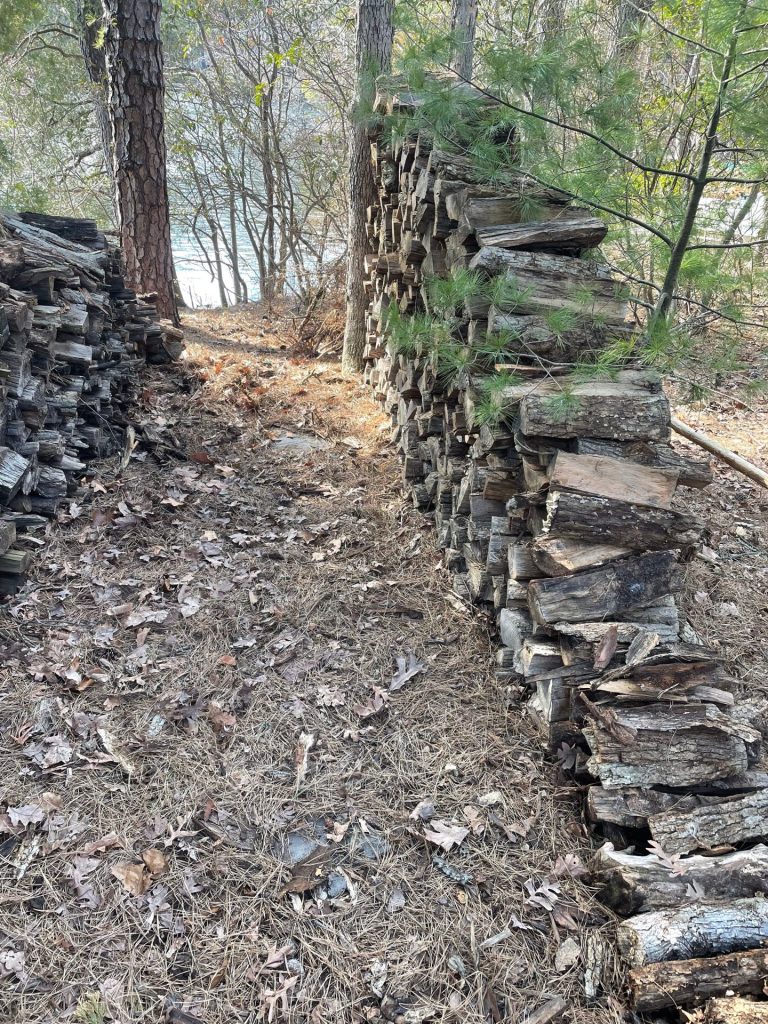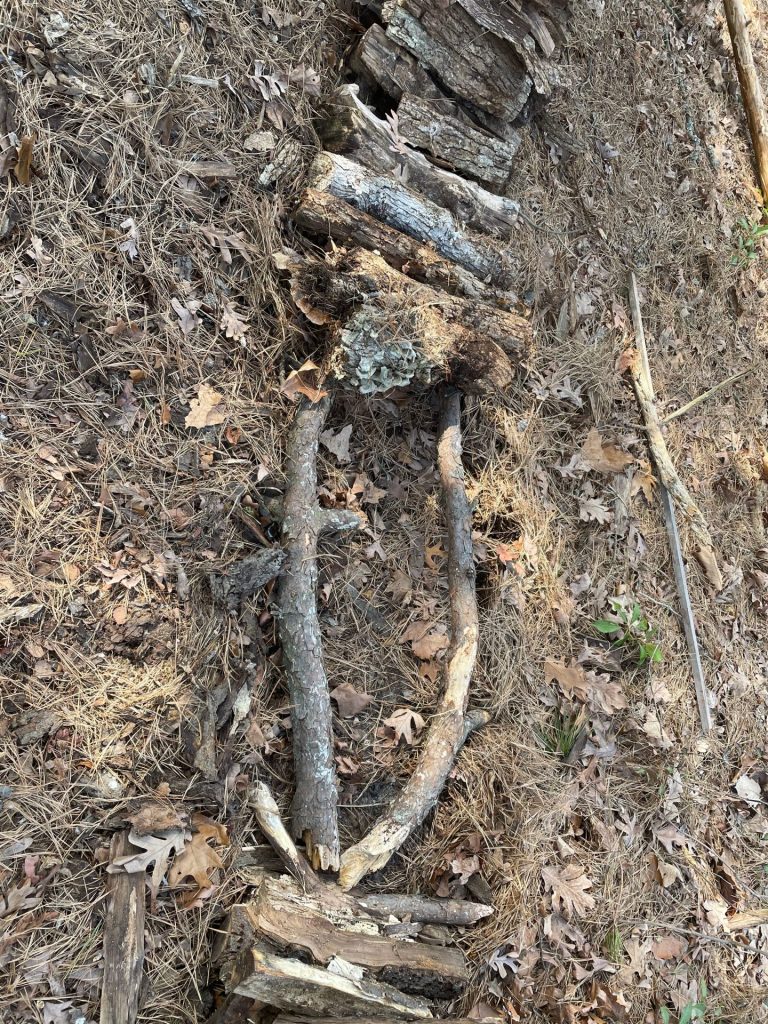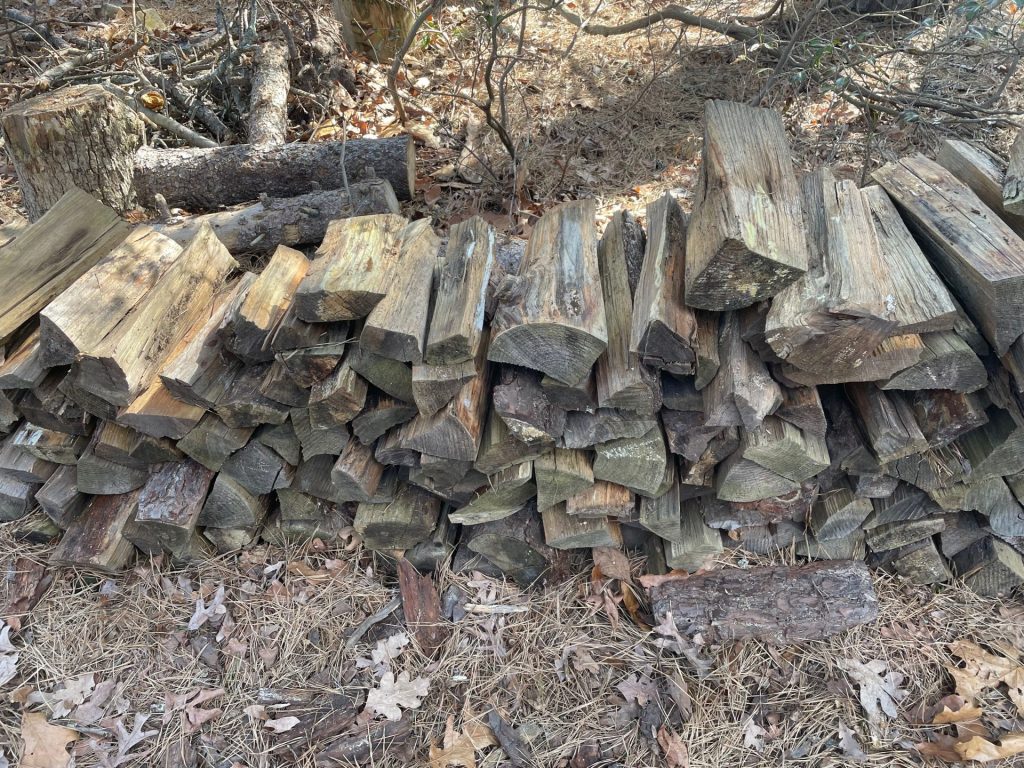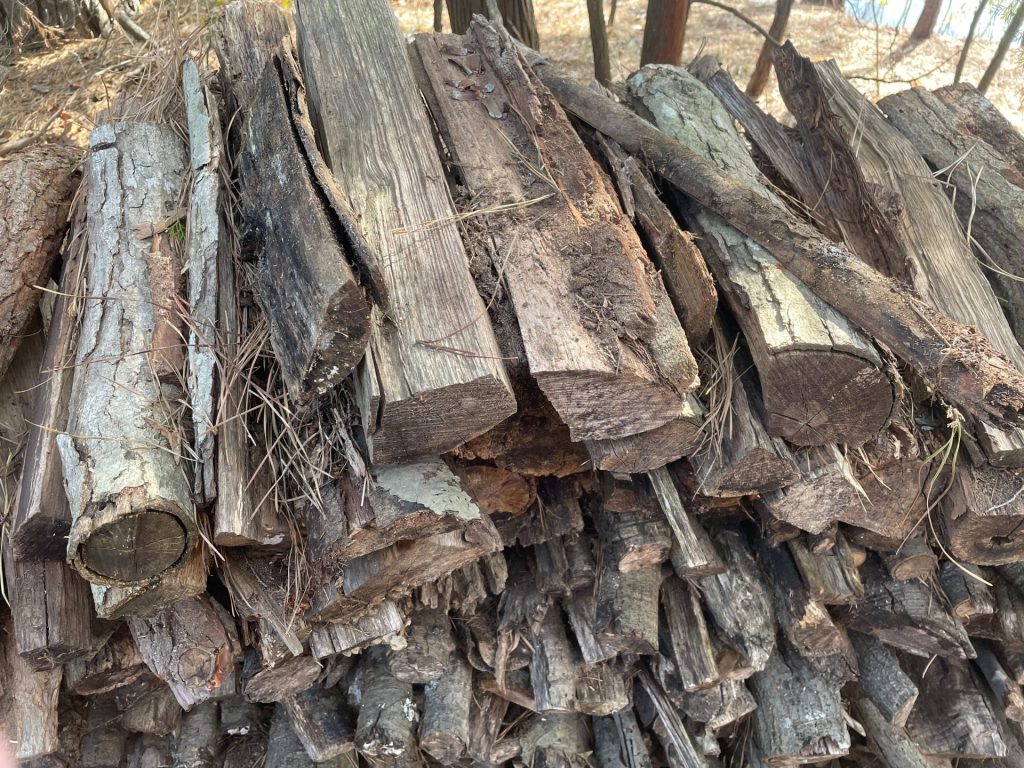
“Chop your own wood and it will warm you twice.” ~Henry Ford
Most of the wood I had already split and stacked, but there were a few rounds piled up that I had to clear out yet, just because I hadn’t finished it all, and I got to thinking about some of the ways to stack wood properly.
There are a few right ways to stack wood, and many wrong ways. There are also some general maxims you should follow regardless of the technique you observe.
There are also a couple “hacks” I’ve discovered or developed over the years that I thought might be fit to share. Here are a couple.
Keeping It Off the Ground
This is the most important rule of wood stacking. It actually seems so obvious that at first I didn’t think it would merit being called out directly, but then again, everyone has to learn somewhere. At some point in my life, I probably didn’t realize this either.
No matter what you’re splitting and stacking, be it oak, pine, or something in between, you need to keep it off the ground. The only situation in which you can stack wood directly on the ground is if you’re stacking iron stone or a paved surface that will not hold water.
If you stack wood on the ground – grass, leaves, pine needles, or even bare dirt – you’re going to trap moisture and the bottom layer of wood will rot. If you leave it long enough, not only will the bottom layer rot, but that moisture will effectively wick through the wood and start rotting the wood above it.
So let’s just put down a ground rule and establish that you can’t stack your wood on the ground.
Now that we’ve covered that…
If You Can’t Keep It Off the Ground: The Sacrificial Lamb (Log?)

Suppose you have no way to get your wood off the ground? What do you do, suck it up and stack it on the ground anyway?
I wouldn’t recommend it, there’s a better method. While you’re splitting, look some some elongated but sturdy branches and set them aside.
Get two parallel runs, between four and eight feet is ideal, and lay them on the ground. Spread them apart so that they are about as wide as the length of the wood you are splitting.
Stack your split woon on this logs/branches, which will keep them off the ground. While it isn’t ideal, the branches will rot instead of your firewood, and since your wood will only contact it at two points, moisture transfer will be minimal. Having some open space beneath the firewood is good anyway because it improves air circulation which will inhibit rot and accelerate seasoning.
This is one of the better “tricks” I’ve learned, although I’m confident I wasn’t the first person to come across it. Either way, put it in practice if you’re ever between a rock and a hard place and don’t have another better way to keep your wood off the ground.
Go Tall but Stack Even
There are a lot of guides out there that will tell you you shouldn’t stack your firewood piles too tall, and suggest keeping them to about 4 feet in height, max.
The justification I’m seeing for this is that it’s dangerous to have a tall stack of firewood about. I can see the reason for this position; I wouldn’t want to be on the business end of a collapsing cord of oak or maple, to that point.
But as long as you’re not extreme about it, going tall isn’t a huge deal. In fact, there are some circumstances in which you might need to stack tall (exceed 4 feet in vertical height, I mean) simply because you don’t have a long enough horizontal run to keep it shorter.
Here’s the thing, though. If you do stack tall, make sure you stack evenly and balance the load. The main thing that knocks over piles of wood is uneven stacking, which is typically caused by stacking pieces of wood that are different in length, which creates overhangs which can pull the stack off balance.

If you have longer pieces of wood, stack them at the bottom. This will create a stack that it flares at the base and tapered off toward the top, which will be inherently more stable than a stacked mish-mosh of pieces of wood of different lengths.
Another thing to keep in mind is to stack evenly, if you can do that. That will help prevent the issues aforementioned.
Hammer the Loose Ones in (or Out)
As your wood pile settles, you will nigh inevitably encounter scenarios in which the pile is leaning one way or the other. Sometimes, some pieces settle in such a fashion that they are sticking out from the pile.
Sometimes, it gets so bad that you need to unstack and re-stack the pile. But in some cases, you can fix the issue another way without all that extra work.
Simply get a nice piece of wood from the pile, one thin enough that you can wield it like a maul. Use it just like that – as a mallet to hammer the outliers back in.
Nine times out of ten, the pieces of wood that migrate outwards from the pile as it settles are ones that are loose to begin with. That means since they were able to wiggle out, you should be able to pound them back in.
Pound those pieces that are sticking out back in, then tap in the pieces surrounding them, which often helps to wedge them more tightly together.
This trick doesn’t always work, but I must admit that I have found it helpful at times.

Don’t Double the Rows
If you’re short on space, it can be tempting to stack multiple stacks next to each other. I mean, in such a fashion that the end grain of the two faces of the piles are adjacent.
Do this if you absolutely must, but if I had any say in the matter whatsoever, I would strongly advise against it. Doing so increasing the general density of the pile and makes it a lot more difficult for wood to shed moisture and season.
Most of the moisture a piece of wood loses anyway – in fact, nearly all – gets out through the endgrain. Stacking piles back to back (or end to end, if you will) basically means that the two piles are breathing on each other.
It’s acceptable to stack them in this manner so long as they aren’t touching, but you still want as much airflow around the piles as possible.
If you must stack two or more piles in a sequence in the manner I’ve described, under no circumstances should the piles be touching. Separate them at least by a few inches.
Also, never stack a wood pile directly against a structure, no matter what it is made of, as that will trap moisture and can not only cause your pile to rot, but can cause damage to whatever the wall, fence, or structure is made of.
Do Not Cover the Pile Entirely
This tidbit of advice is also not mine although I can’t remember exactly where I came by it. Nonetheless, it is not a good idea for you to cover your pile of wood entirely.
By this, I mean that if you do drape a tarp or some other cover over the top of your stack, make sure it covers only the top of the stack and does not hang down over the sides.
The idea harbored by those that use the tarp method to accelerate wood seasoning is this: covering the wood stack prevents rain from soaking down into it.
This is true; tarps are waterproof. But in recognizing that tarps are waterproof we much also bear in mind that the prevent water from escaping with the same facility with which they keep it from entering.
That is, wood trapped under a tarp will not dry effectively and may even rot.
From what I’ve read in magazines and on the internet, the jury is out. There are some proponents who suggest not covering your wood pile at all. I am one of them. Rain falling on wood will, for the most part, evaporate within a few hours. It’s been my experience, however limited, that it is best not to cover the pile at all.
But if you want to, just make sure you only cover the top and don’t let the tarp drape down over the sides.
Wood Seeks Its Own Level
My final parting bit of advice is this: don’t overthink it. Stacking wood might be a small part art mingled with science, but it is not rocket science. It’s much easier than you think it is.
While you do need to think about the size of the splits you’re stacking, you don’t want to overthinking it. About 95% of the time, you can toss a piece of wood on the stack and it will naturally settle into a place that suits it.
Wood, like water, seeks its own level. You only need to intentionally rearrange things when you can see there is a definite problem with the way the stack is falling.
Otherwise, let the wood seek its level.
Stay dry, and happy stacking.
~The Eclectic Outfitter